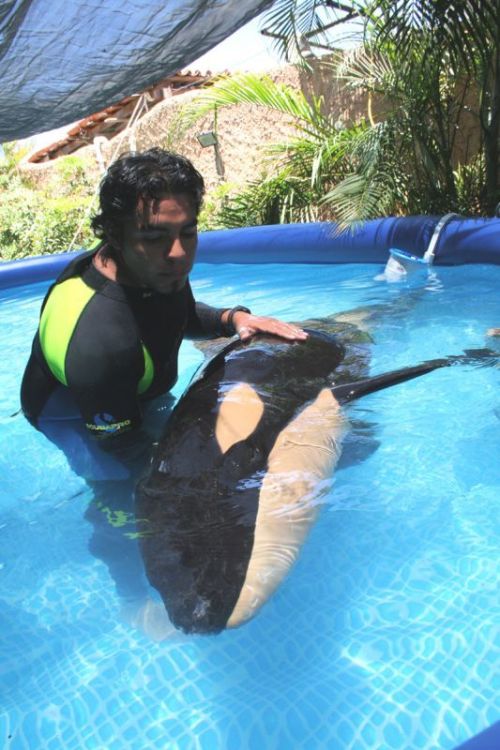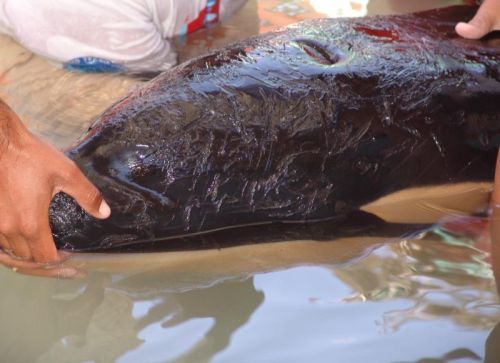#bay of matanchén
Gender:Female
Pod:N/A
Place of Capture: Bay of Mantanchén, Mexico
Date of Capture: April 10, 2007
Age at Capture: Approx. a few weeks
On April 10, 2007, a very young female calf was found stranded in the Bay of Mantanchén in Mexico.
Later known as Pascuala, she was covered in wounds that were likely the result of fishing nets, and was thought to be only a few weeks old; though some sources claim she still had part of the umbilical cord attached.
Because there were no other Orcas sighted in the area, Pascuala was transported to a pool at a restaurant at Borrego Beach where her health was assessed.
The next day, she was transferred to a dolphinarium in Vallarta. Here, she was kept in a small pool, as swimming was difficult for her without any help. She was fed and kept under volunteer supervision 24 hours a day.
Plans were soon made to fly Pascuala to SeaWorld San Diego for better care. However, organizations such as Greenpeace, as well as the Mexican government’s environmental protection agency, blocked the transfer. Mexican wildlife conservation laws do not allow the exporting of marine mammals, so Pascuala was to stay in Mexico.
However, Pascuala did make improvements every day, and was soon moved to a larger pool. She became more active and enjoyed the company of humans, but was introduced to the park’s dolphins, who were apparently fearful of her, even though she was playful and friendly towards them.
By the end of April, her daily interactions with humans was reduced to only a few hours in the water, as opposed to 24 hours a day just weeks before. Volunteers described her as depressed and less active. Pascuala even lost weight despite how much she was eating.
Caretakers did their best to try and keep her alive, but Pascuala died on June 10, 2007. Her official cause of death is listed as Immune System Failure, Malnutrition, and Infection.
Post link






